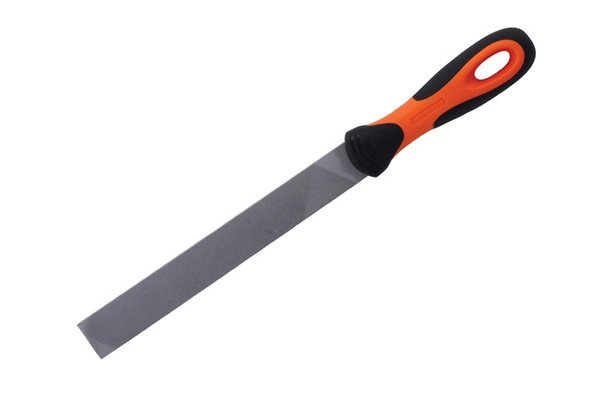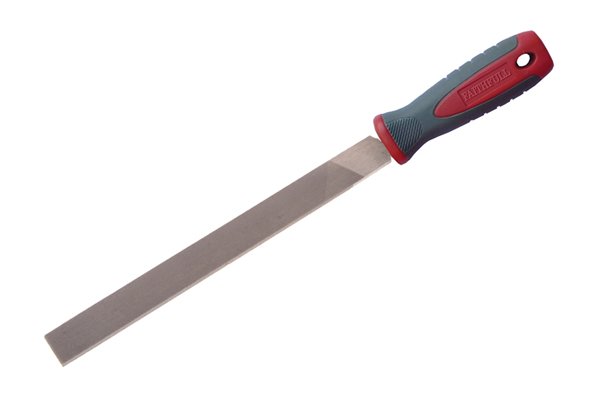
How to sharpen a shovel?
Content
Even a snow shovel will need to be sharpened, as digging with a sharp blade requires less effort. Don't waste your time and energy on a dull blade; sharpening a shovel blade is not a difficult task.

 All that is required is a flat metal file.
All that is required is a flat metal file.An 8", 10" or 12" file will do.
Try to use one that has a handle to avoid potential injury from rows of teeth.
 A double cut flat file is a rough file that will remove a lot of material to create an edge. You will need this if your shovel is particularly dull.
A double cut flat file is a rough file that will remove a lot of material to create an edge. You will need this if your shovel is particularly dull.  A single pass milling file is a thinner file used for sharpening and finishing edges.
A single pass milling file is a thinner file used for sharpening and finishing edges.Step 1 - Attach the shovel
Clamp the shovel blade up in a vise if you have one. If not, ask someone to hold the shovel for you.
Place it horizontally on the ground with the blade up and place your foot firmly behind the socket (where the blade connects to the shaft) to secure the shovel.
Step 2 - Check the angle
Before you start sharpening any hand tools, it is important to know the correct bevel angle for specific tools. First, pay attention to the initial bevel of the blade before sharpening to keep the correct angle.
If the original edge angle is visible...
Position the file with one cut at the same angle. Press the file firmly against the corner with the cutting teeth pointing downwards and move forward confidently. Do not run the file back over the blade.
Work in one direction along the entire length of the cutting edge. Check the sharpness of the blade after a few strokes. Repeat as needed.
If the original edge angle is not visible...
You will need to form the corner yourself. Sharpness and durability are two factors to consider when choosing a sharpening angle.
The smaller the angle, the sharper the edge. However, this means that the cutting edge will be brittle and therefore less strong. A small paring knife, used for peeling and chopping, for example, will have a slight angle of about 15 degrees. The larger the angle, the stronger the edge. Since we are sharpening a blade that may have to cut through tough roots or rocky soil, a stronger blade is required. A 45 degree bevel is the right balance between sharpness and durability. First, use a double cut file to shape the edge. Position the file at a 45 degree angle to the front of the blade and apply pressure to the edge using the full length of the file to avoid abrading a specific area of the teeth.Continue these forward motions along the entire length of the cutting edge and maintain a 45 degree angle. Do not run the file back over the blade.
When the beveled edge of the shovel is roughly formed, use a single cut file to fine-tune while maintaining the same angle.
It is not necessary to file the entire blade as most of the cutting is achieved within a few inches on each side of the point.So how do you know if it's sharp enough?
You can feel the slightly raised edge when you run your finger along the ENTIRE underside of the bevel.This is known as a burr (may also be called a pen or wire edge) and indicates that the sharpening is almost complete.
A burr is formed when the edge becomes so thin that it cannot withstand the tension of the file and folds over to the other side.The trick is to remove the burr yourself before it breaks. If you let the burr come off, the bevel will become blunt.
To remove it, turn the blade over and run the file flush with the underside of the new bevel. Do not tilt the file. The burr should come off after a few blows.To finish, turn the blade over again and carefully run the file over the new bevel to remove any burrs that may have been pushed back.
Once you are happy with your newly honed blade, TLC it and apply a coat of anti-rust oil. Please see our section: Care and maintenanceNow your shovel will be able to compete with a double-edged razor for your money ...
If you use the shovel on stony or compacted soil, or use it intensively, the sharpening process may need to be repeated throughout the season.
